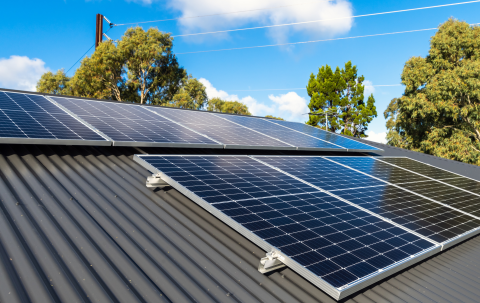Last week the Environmental Protection Agency (EPA) announced that Vermont will receive a historic $62.4 million grant from the Solar For All Program. The program is intended to make solar power more affordable for disadvantaged communities and low-income households, including residents of subsidized affordable housing developments.

The Solar For All Program (SFA) was created under the Inflation Reduction Act of 2022. It will offer $7 billion nationally to help lower the cost of electricity through solar power, which has historically been out of reach for low-income households. In Vermont to date, the top 20% of income earners have accounted for 36% of solar adoption, while the bottom 40% accounted for just 10% of solar adoption.
SFA was championed by Vermont Senator Bernie Sanders who said, “The United States can and must lead the world in transforming our energy systems away from fossil fuels. The Solar for All program—legislation that I successfully introduced—will not only combat the existential threat of climate change by making solar energy available to working class families, it will also substantially lower the electric bills of Americans and create thousands of good-paying jobs. This is a win for the environment, a win for consumers, and a win for the economy."
Vermont’s application to the EPA was prepared by Vermont’s Department of Public Service (PSD). It proposes three separate programs, including one for community solar run through the utilities that will build off the existing ACRE program, one for single-family homeowners offered through local banks, and one program for affordable housing projects.
Vermont Housing Finance Agency (VHFA) collaborated with the Public Service Department on the program design for affordable housing. The program proposes to use SFA to offer grants and loans to affordable housing developers to place solar arrays on building rooftops, on on-site ground-mounted arrays, on rooftops of energy-efficient manufactured homes, or on larger off-site community solar installations.
Community solar installations will be important to allow Vermont to equitably and efficiently deploy SFA. Multifamily housing built in a downtown area or in a village infill site typically does not have adequate rooftop space for enough solar panels to offset more than a 15% of building load in most scenarios, especially as those rooftops are increasingly used to house heat pumps. A housing developer can use the revenue generated from an off-site solar project to off-set the electrical costs for multiple buildings.
Solar power will help affordable housing developers become part of the climate solution by offsetting the increased costs associated with all-electric building designs. The program will also benefit tenants, who can expect to receive a long-term 20% or more reduction in utility costs or equivalent benefit under the program.
SFA will come online at the same time as other historic energy investments, including an additional $20 billion from the Greenhouse Gas Reduction Fund, and increased federal tax credits for up to 70% of the cost of clean energy projects.
EPA anticipates that SFA funding will be allocated to states and tribal governments by the end of the summer 2024. Award recipients will need to spend the funding by 2029.

